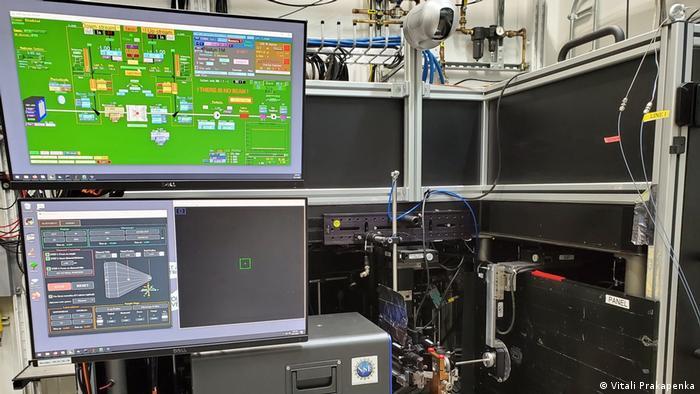In school the different states of water have always been taught with simple categories: solid, liquid and gas.
However, these 3 states can give rise to more than a dozen different structures, depending on the temperatures and pressures the water is subjected to.
Well, in 2019, a team of scientists managed to send a shock wave through a drop of water, adding a new phase to the aforementioned list: superionic ice.
This could be part of most of the icy giant planets in the universe, such as Uranus or Neptune. Although at that time it was achieved ephemerally and without being able to have any control.
An algorithm obtains the best images of the dark side of the Moon, a great advance in the search for water for future human colonies
Now, using what is known as the Advanced Photon Source (APS), in a study published in Nature Physics, they have found a way to more reliably create, maintain, and examine ice .
"It was a surprise: everyone thought that this phase would not appear until you are under much higher pressures than where we first found it," said study co-author Vitali Prakapenka, a research professor at the University of Chicago (United States) and APS scientist at the Argonne National Laboratory.
Superionic ice, a new state of matter that can now be controlled

How APS works has a lot to do with the depths of the Earth. These have never been explored, as when reaching a certain depth, the equipment begins to melt, so recreating these states in a laboratory usually offers quite a few answers.
Vitaly Prakapenka
In this way, the APS is a massive accelerator that propels electrons at extremely high speeds, very close to the speed of light, in order to create bright beams of X-rays.
The lasers are fired through diamonds, since diamonds are the hardest on Earth, and thus simulate different pressures to heat the sample.
“We have been able to trace very precisely the properties of this new ice, which constitutes a new phase of matter, thanks to several powerful tools,” added Parakapenka.
By placing the ice between these, the scientists thought something had gone wrong, as an unwanted chemical reaction had occurred. However, they had on their hands a new state of matter.
“Imagine a cube, a network with oxygen atoms at the corners connected by hydrogen,” Prakapenka explained. “When it transforms into this new superionic phase, the lattice expands, allowing the hydrogen atoms to migrate around, while the oxygen atoms remain stable in their positions. It's like a network of solid oxygen in an ocean of floating hydrogen atoms."
And this structure could be crucial to find life on other planets, since the properties of these ices are of vital importance in the configuration of the planet's magnetic fields, with the necessary protection from cosmic radiation.
“It's a new state of matter, so it basically acts like a new material, and it may be different than we thought,” added Prakapenka.
Finally, scientists will continue to investigate at different pressures and temperatures, although now they seem to be on a better track than in 2019, because they have it under control.
Without mining or Portezuelo, a company that produces wine is born in Malargüe
Study considers that gender equality is not a priority for 70% of global companies
Ceviche to Recoleta and croissants for officials: the bet of the workers of Villa 31 to sell outside the neighborhood
Bin Salmán says that "there is no difference" between men and women